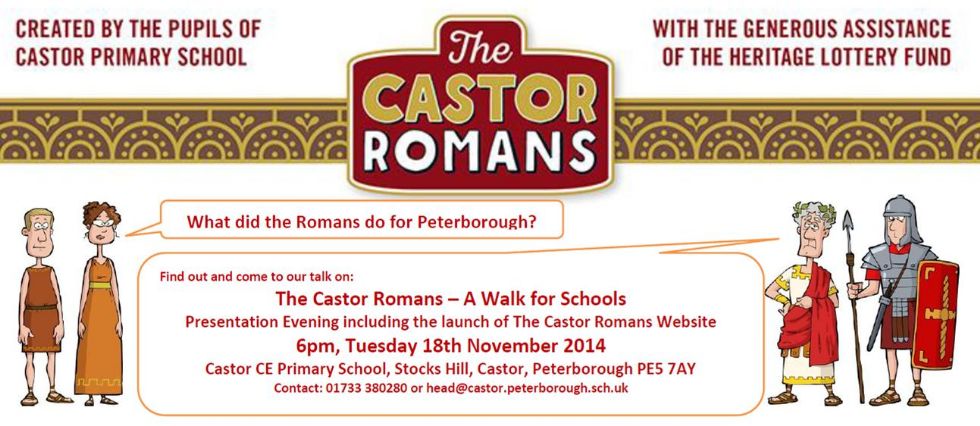
Pupils from Castor School, assisted by staff and Professor Stephen Upex, will be presenting their learning on the Roman finds in Castor and neighbouring fields. Designed to inform and inspire teachers, children and neighbours to understand daily life in Roman Britain.
The presentation will give details of a walk for schools to enhance children’s understanding of life in Roman times in the Peterborough area. Focusing on sites closely linked to the town of Durobrivae (Duro–bree–va) including Ermine Street, Roman villas, pottery kilns, iron works, a bath house and the second largest building in Roman Britain.
Please contact us if you wish to attend this event.
A website detailing the walk and providing information to schools will be launched at the event. It will include information for children prepared by pupils with video clips recreating Roman life. There will be lesson plans for teachers to enable delivery of activities in the classroom.
The walk around the area includes:
- The large government building under Castor Church.
- The Bath House under the school’s field.
- Crossing Ermine Street and walking through Normangate Field with its many industrial sites – pottery kilns and ironworks.
- The site of a Roman villa and insight into farming and town life.
- Passing the site of the Roman bridge crossing to the town of Durobrivae, near Water Newton.
It would make an ideal morning or afternoon trip for pupils from Year 3 to Year 6, enhancing their knowledge of Roman Britain and linking to the New Primary Curriculum. Information about the work of archaeologists in the area as well as some of their finds will be available on the website and to handle at the launch event.
Other learning opportunities during the walk are also possible – geographical skills linked to the River Nene, English, mathematics and all manner of outside learning will be supported on the website.
